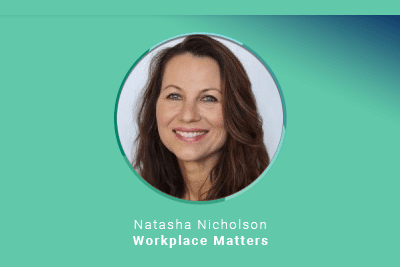
Post-pandemic, mental health in the workplace has become a priority as never before — and preventing harassment is at the heart of the issue. One community-based mental health organization puts it this way, “When you are harassed at the workplace, this makes more room for anxiety to appear. There are many anxiety disorders that people can develop through time, and many of them can affect your functioning. You may have constant feelings of fear and anxiety, thoughts that something bad will happen soon, and an inability to work on your tasks because of these thoughts.”
According to a McKinsey study, one in three employees say returning to work, as part of a post-pandemic transition, has had a negative impact on their mental health, making them anxious and depressed.
The study’s findings posit that “employers who recognize and prioritize psychological safety alongside physical safety in their post-pandemic operations can help employees’ mental health and their own efforts to cultivate inclusive workplaces. This support can have concrete effects on critical workplace outcomes, including employee well-being, satisfaction, productivity, and absenteeism.”
A new mental health framework from the U.S. Surgeon General
The United States Surgeon General, Dr. Vivek Murthy, agrees. A recently released Surgeon General’s Framework for Mental Health & Well-Being in the Workplace outlines the foundational role workplaces should play in promoting the health and well-being of workers. “As reports of ‘quiet quitting’ and the Great Resignation have shown, the COVID-19 pandemic has changed the nature of work for many and the relationship that some workers have with their jobs.”
The surgeon general says this framework will “require organizations to rethink how they protect workers from harm, foster a sense of connection among workers, show workers they matter, make space for their lives outside work, and support their growth. It will be worth it, because the benefits will accrue for workers and organizations alike.”
The framework announcement cited these startling statistics on mental health in the workplace:
- 76 percent of U.S. workers in a 2021 survey reported at least one symptom of a mental health condition(anxiety, depression), an increase of 17 percentage points in just two years.
- 81 percent of workers reported they will be looking for workplaces that support mental health in the future.
- 84 percent of respondents reported at least one workplace factor that had a negative impact on their mental health.
The top recommendation should be no surprise. Stated as “protection from harm,” it is described as follows:
Protection from harm: Creating the conditions for physical and psychological safety is a critical foundation for ensuring mental health and well-being in the workplace. To promote practices that better assure protection from harm, workplaces can:
- Prioritize workplace physical and psychological safety
- Enable adequate rest
- Normalize and support focusing on mental health
- Operationalize Diversity, Equity, Inclusion, and Accessibility (DEIA) norms, policies and programs
Let’s dive in deeper to look at what it means to protect employees from harm and consider why harassment prevention is one of the key ways this can be accomplished.
How harassment prevention is connected to mental health
Protection from harm by its very definition requires preventing something bad from happening. That’s why it’s called harassment prevention. That means not only creating awareness about the mental health damage that harassment can do, but also taking concrete action to address behaviors that can ultimately lead up to the legal definition of harassment — such as bullying, microaggressions (slights and barbs sometimes disguised as “jokes”) and other behaviors that demean and minimize others.
- Create awareness about the effects of harassment on mental health – At their core, most people want to help others. That’s why your first step is to prioritize the physical and psychological well-being of your employees by educating them on the damage that harassment can do and appealing to their own natural instincts to protect others from harm. Consider that there is nothing more powerful than story-based learning. When people hear others talk about their experience, it broadens their perspectives and gives insights into how people can experience the same workplace in different ways.
Action: Expose your employees to learning that shows real people sharing their personal experiences around mental health.
- Address the precursors to harassment – Harassment doesn’t come out of nowhere. Harassers will often test their boundaries to see how far they can go. That’s why addressing the precursors to harassment, such as bullying, microaggressions, sexual innuendos is critical. Employees need to understand the nuances of misconduct and the damage it can do to the mental health of their colleagues. Pivotal to this — they need the opportunity to see both positive and negative behaviors play out and know what to do when they are faced with these situations in real life.
Action: Have your employees engage in interactive scenarios that direct them to make choices on how they might behave in certain situations.
- Ensure managers know what to watch for – Managers are your single most important audience. They are a primary organizational conduit, yielding influence in multiple directions —their team, senior leaders and peers. They play a crucial role in creating a safe and inclusive environment — securing the psychological safety and mental health of your employees. But to do so, they must be equipped with the right strategies and tools they need to make a difference. To start, they need guidance on how to spot signs of behavioral changes among their employees. And when an employee comes to them with concerns, they should be prepared to go into the conversation believing what they hear is real and must be investigated.
Action: Provide managers with education and training on such issues as intervention and retaliation. Fortify them with what they need to take deliberate action.
- Foster a culture of inclusion and belonging, from the top – Your company culture sets the stage for the behavior of your employees. If employees feel protected, included and appreciated, this lays the groundwork for trust. That trust can help employees to better understand each other and see that differences are what make teams stronger and more successful. Culture change must start from the top and respectful behavior must be modeled by everyone in a position of leadership. Employees will mirror that behavior and be able to help build an environment that supports mental health.
Action: Foster leader/manager commitment and accountability. Help them cultivate a sense of empathy and put them at the center of creating a safe and inclusive workplace.
- Prioritize mental health and harassment prevention through policies and processes – All your efforts and best intentions to create a culture of psychological safety and mental health for your employees can crumble without complementary policies and procedures. Consider the manager who does not have flexibility to provide time off for an employee during a stressful time in their life, or a workplace with such rigid standards and high demands that an employee’s work/life balance is severely compromised.
Action: Review all policies and procedures and adjust areas that do not support the safety and well-being of your employees.
Finally, harken back on your own experiences with what it feels like to be in an organization that sees you as more than a resource for monetization. Look back at those times when you felt appreciated, understood and valued as a human being. How did that make you feel? Did it make you want to work harder to support the mission of the organization? Did it make you more focused and engaged in your work? While research shows statistics on the importance of mental health in the workplace, your own experiences will fortify you with the commitment, time and energy you will need to put your plans into action.












